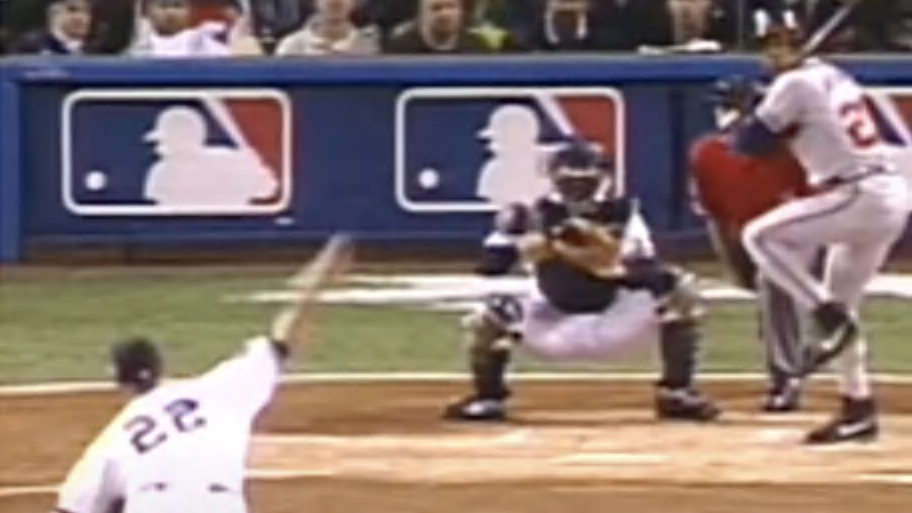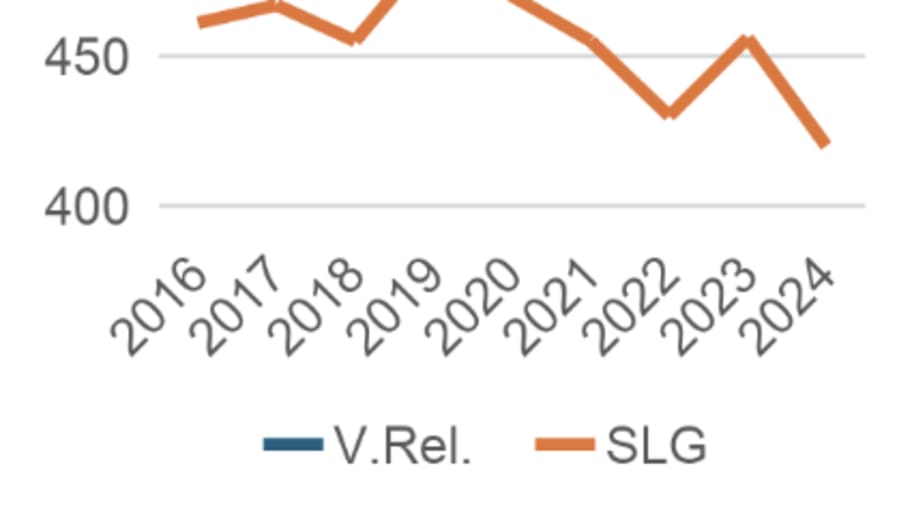
“Get on top of it!”
"Your arm is dropping!”
“Get your arm up!”
For years, this kind of folk wisdom passed as sage pitching advice because … well, because pitching had always been done this way. To throw hard and to throw well, pitchers were taught to throw from at least a high three-quarters release point, if not higher.
The selection Sunday of the 25 All-Star pitchers provided confirmation of how technology has changed the paradigm of pitching. Sixteen of them throw from less than six feet off the ground, a lower average release height than what was standard just eight years ago.
In the 17 seasons of the Pitch Tracking Era (since 2008), four-seam fastballs this season are:
1) Thrown from the lowest average release point.
2) Yield the lowest slugging percentage.
Technology and data are driving this change. And leading the way is Paul Skenes, the Pittsburgh Pirates phenom who earned his All-Star selection by becoming the first pitcher to go undefeated through his first 10 starts with 78 strikeouts. He is the premier post-modern power pitcher because of how he throws, not what he throws.
Skenes is a towering 6' 6" but throws his 99-mph fastball from a release point just 5.68 feet off the ground. That’s almost two inches below the major league average. Skenes throws in such a way that his pitches defeat the swing path of hitters. Skenes is part of a new generation that grew up understanding the “how” and “why” of pitching from a scientific perspective. They speak tech as a first language.
Compare this generation to what was happening a decade ago, when technology first became widespread. Phil Maton was a pitcher who went undrafted out of high school and again after his junior season at Louisiana Tech. Finally, as a senior in 2015, he was drafted in the 20th round by the San Diego Padres.
Maton always had been told to keep the ball down. When he reported to the Tri-City Dust Devils in Pasco, Wash., he heard about spin rates and attack angles for the first time in his life. Once the Dust Devils measured his pitches with Trackman, they found Maton had a high-spin fastball with a low release point. Pitching coach Nelson Cruz encouraged him to throw his fastball to the top of the zone more often. Maton rocketed through the minor league system and reached the majors in just two years. His release point is just 5.35 feet off the ground. The former 20th-round pick has earned $12 million in his career. Without technology and still trying to live by “keeping the ball down,” he likely has no career, which is why the name he chose on the back of his jersey for a Players Weekend was “Spin Rate.”
Why is throwing fastballs from a low release point to the high part of the strike zone a new pathway to pitching success? It is because of something called Vertical Approach Angle (VAA). The ball travels on a flatter plane than the hitter is accustomed to seeing. If Skenes, for instance, threw his fastball from 6.08 feet off the ground, the 2016 average, hitters would see the ball traveling on a steeper path that is easier to track and most often better matches the arc of their swing. A fastball with a smaller VAA so tricks the eyes that the ball appears to be rising, or what is called “hop” on a pitch.
VAA can be more important than velocity, though it should not be thought of as a stand-alone metric. (Spin rates, pitch sequencing and mechanics matter significantly in VAA). VAA is why hitters struggle to hit the invisi-ball, 92-mph heater of Shota Imanaga of the Chicago Cubs, why they hit .184 against the otherwise ho-hum 91-mph four-seamer of Paul Sewald of the Arizona Diamondbacks and why low-release pitchers such as Tanner Houck, Logan Webb, Matt Strahm and Tanner Scott are joining Skenes as first-time All-Stars.
With Skenes at the forefront, we are seeing more young power pitchers throwing from a low arm slot than we saw 10 or especially 20 years ago. Here are the hardest-throwing, low-release starters in MLB this year. Note that all of them are 26 or younger:
Lowest Release Point, Starters Averaging 96 MPH
Here are three of the best young power pitchers, Jones, Rodriguez and Skenes. Note the low three-quarters release point:

Compare these guys to the power pitching model back in the day, Roger Clemens:

But it’s not just the young guns who are throwing from a lower arm slot. All-Star Chris Sale, 35, of the Atlanta Braves is throwing from his lowest release point in five years (5.16). Seth Lugo, 34, of the Kansas City Royals made his first All-Star team after dropping his release point to its lowest level in six years (5.49). And 10-year veteran Zack Wheeler, 34, of the Philadelphia Phillies is having his best year and made his second All-Star team with the lowest release point of his career (5.26).
Six of the nine pitchers with the lowest ERA this year throw with a release point below 5.9, which means their fastballs are classified as flat rather than steep:
Lowest ERA with Vertical Release Type
The widespread adoption of VAA steadily has helped depress offense:
MLB Four-Seam Fastballs
* Lowest in 17 seasons of Pitch Tracking Era
Release point and slugging against four-seamers have been going down in lockstep:

Here is how quickly the profile of four-seamers has changed:
Average MLB Four-Seam Fastball
Much of that 27-point drop in batting average is driven by low-release throwers pounding the top of the zone:
Four-Seam Fastballs by Vertical Approach Angle, 2024
Fastballs have become tougher to hit because they are being thrown harder and from a lower release point—but also less often. A pitcher doesn’t want to throw all low VAA fastballs. The deception they cause is mitigated by repetition; too many and you begin to train a hitter on how to hit it.
Instead, they work best with breaking pitches down. Today’s game pressures hitters with swing decisions more than ever before, mostly because 31% of pitches today are spin (nine years ago it was only 25%) and 55% of those breaking pitches wind up out of the strike zone.
In addition to Skenes, Aaron Nola of the Phillies is another obvious example of this evolution. Though he averages just 92 mph, two ticks below average, Nola throws the toughest four-seamer to hit among MLB starters (.110 batting average). Why? He is a VAA monster. He throws from the fifth-lowest release point among MLB starters (5.03) and ranks among the top 15 in highest average height on the pitch (2.99).
There are many reasons why the MLB batting average is .242, the lowest since the Year of the Pitcher in 1968. Lower release points are just one of the factors contributing to this difficult hitting environment. The trend will be on display at the All-Star Game.
This article was originally published on www.si.com as How a Drastic Change in Pitching Mechanics Shaped the 2024 All-Star Rosters.







